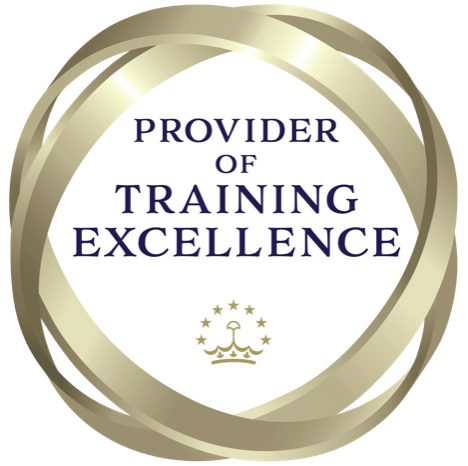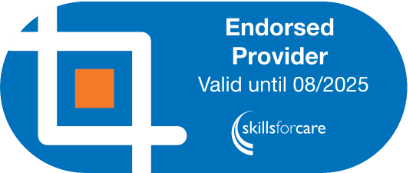


ProTrainings offer special packages for Montessori schools in Paediatric First Aid and packages including our video online training. If you are a school and would like further information, please contact us.
Packages include:
- First Aid in 100% classroom or blended
- Packages of single or multiple video online courses
Our Paediatric courses meet the latest learning outcomes laid down by the Awarding Organisations and our first aid courses fully meet the latest UK and European Resuscitation Council Guidelines as per the HSE requirements. ProTrainings Vocational Training Qualifications (VTQ) are fully recognised by the HSE as Trade Body Qualifications.
The content of this and all our courses has been independently certified as conforming to universally accepted Continuous Professional Development (CPD) guidelines and come with a Certified CPD Statement as well as a ProTrainings Certificate and for online courses an Evidence Based Learning statement.
- Childminders
- Teachers
- Nursery workers
- Au Pairs
- Nannies
- School nurse
This course comes with 12.0 hours of CPD, although the time to complete the course online may be less than this.
The content of this and all our courses has been independently certified as conforming to universally accepted Continuous Professional Development (CPD) guidelines and come with a Certified CPD Statement as well as a ProTrainings Certificate and for online courses an Evidence Based Learning statement.
Course Aims and Learning Outcomes:
Unit 1: Emergency Paediatric First Aid
1. Understand the role and responsibilities of the paediatric first aider
- 1.1 Identify the role and responsibilities of a paediatric first aider
- 1.2 Identify how to minimise the risk of infection to self and others
- 1.3 Differentiate between an infant and a child for the purposes of first aid
2. Be able to assess an emergency situation safely
- 2.1 Conduct a scene survey
- 2.2 Conduct a primary survey on an infant and a child
- 2.3 Summon appropriate assistance when necessary
3. Be able to provide first aid for an infant and a child who are unresponsive
- 3.1 Identify when to administer Cardio Pulmonary Resuscitation (CPR)
- 3.2 Demonstrate CPR using an infant and a child manikin
- 3.3 Justify when to place an infant or a child into the recovery position
- 3.4 Demonstrate how to place an infant and a child into the recovery position
- 3.5 Demonstrate continual monitoring of breathing for and infant and a child whilst they are in the recovery position
- 3.6 Identify how to administer first aid to an infant or a child who is experiencing a seizure
4. Be able to provide first aid for an infant and a child who are choking
- 4.1 Identify when choking is: Mild or Severe
- 4.2 Demonstrate how to administer first aid to an infant and a child who is choking
5. Be able to provide first aid to an infant or a child with external bleeding
- 5.1 Identify the severity of external bleeding for an infant and a child
- 5.2 Demonstrate how to administer first aid to an infant or a child with external bleeding
6. Know how to provide first aid to an infant or a child who is suffering from shock
- 6.1 Recognise when an infant or a child is suffering from shock
- 6.2 Identify how to administer first aid to an infant or a child who is suffering from shock
7. Know how to provide first aid to an infant or a child with bites, stings and minor injuries
- 7.1 Identify how to administer first aid for: Bites Stings Small cuts Grazes Bumps and bruises Small splinters Nosebleeds
Unit 2: Managing paediatric illness, injuries and emergencies
1. Be able to administer first aid to an infant or a child with suspected injuries to bones, muscles and joints
- 1.1 Recognise a suspected: Fracture or dislocation and Strain or Sprain
- 1.2 Identify how to administer first aid for an infant or a child with a suspected: Fracture or dislocation and Strain or Sprain
- 1.3 Demonstrate how to apply a support sling and an elevated sling
2. Be able to provide first aid to an infant or a child with suspected head and spinal injuries
- 2.1 Recognise a suspected: Head Injury and Spinal Injury
- 2.2 Identify how to administer first aid for an infant or a child with a suspected head injury
- 2.3 Demonstrate how to administer first aid for an infant or a child with a suspected spinal injury
3. Know how to provide first aid to an infant or a child with conditions affecting the eyes, ears and nose
- 3.1 Identify how to administer first aid for an infant or child with a foreign body in the: Eye, Ear and Nose
- 3.2 Identify how to administer first aid for an infant or a child with an eye injury
4. Know how to provide first aid to an infant or a child with an acute medical condition or sudden illness.
- 4.1 Recognise suspected: Diabetic emergencies Asthma attack Allergic reaction Meningitis Febrile convulsions
- 4.2 Identify how to administer first aid for an infant or a child who is suspected to be suffering from Diabetic emergency Asthma attack Allergic reaction Meningitis Febrile convulsions.
5. Know how to provide first aid to an infant and a child who is experiencing extremes of body temperature.
- 5.1 Recognise when an infant or a child is suffering from extreme cold and extreme heat
- 5.2 Identify how to administer first aid for an infant or child who is suffering from: extreme cold extreme heat
6. Know how to provide first aid to an infant or a child who has sustained an electric shock
- 6.1 Identify how to safely manage an incident involving electricity
- 6.2 Identify how to administer first aid for an infant or child who has suffered an electric shock
7. Know how to administer first aid to an infant or a child with burns or scalds
- 7.1 Identify how to recognise the severity of burns and scalds
- 7.2 Identify how to administer first aid for an infant or a child with burns and scalds
8. Know how to administer first aid to an infant or a child with suspected poisoning
- 8.1 Identify how poisonous substances can enter the body
- 8.2 Identify how to administer first aid for an infant or child with sudden poisoning
9. Be able to provide first aid to an infant or child with anaphylaxis
- 9.1 Recognise suspected anaphylaxis in an infant or a child
- 9.2 Identify how to administer first aid for an infant or a child with suspected anaphylaxis
- 9.3 Demonstrate the use of a training device adrenaline auto-injector.
- Student Manual (V8.7) - Paediatric First Aid
- Adult CPR Flowchart
- Adult CPR Flowchart handout/poster
- Asthma UK weblink
- Catastrophic bleeding and trauma First Aid Guidance From ProTrainings.
- Child CPR Flowchart
- Child CPR Flowchart handout/poster
- Child and Infant CPR Flowchart Handout
- Childcare Accident Book
- Clean hand techniques leaflet
- Coronavirus (COVID-19) - link to the NHS website
- EpiPen patient information sheet
- Example of an accident report form for Paediatric courses - student handout or they can download from their dashboard
- Find out what other courses are available as video online, blended and classroom courses nationally - our course finder
- Free student first aid program leaflet
- Government Advice - Best Practice Hand Rub
- Government Advice - Best Practice Hand Wash
- HSE First Aid at Work Regulations
- HeartSine 350 Information Leaflet
- Home Emergency Contact Sheet
- How to register to call EMS by text
- Infant CPR Flowchart
- Infant CPR Flowchart handout/poster
- Jext Product Data Sheets
- Jext patient Information Sheet
- Link to our Concussion ad Brain injury course in association with Headway, a head injury charity
- Link to the HSE website
- Meningitis Now website with many leaflets and resources link
- Oxygen User Instructions - Gas rentals are available from ProTrainings, contact us for more information
- Oxygen and Analgesic gases from ProTrainings
- ProTrainings - Using an AED Leaflet
- ProTrainings Defibrillator eGuide
- Proper CPR Hand Placement for Adults Children Infants leaflet
- Sign up for free Student First Aid - use code SCH-376-61-571
- Student Manual (V7.0) - First Aid - Arabic
- Student Manual (V7.0) - First Aid - Spanish
- Student Manual (V8.3) - Pierwsza Pomoc w Pracy Ksiazka studenta - Polish
- Student Manual (V8.6) - Anatomy and Physiology Human Body
- Student Manual (V8.6) - First Aid - Welsh
- Student Manual (V8.7) - Planning in the Moment in Early Years
- Student Manual V8.6 - First Aid - Dutch
- Student Manual V8.6 - First Aid - Portuguese
- Student manual V8.6 - First Aid - French
- Student manual V8.6 - First Aid - Ukrainian
- Student manual V8.6 - First Aid Manual Italian
- Visit the First Aid Show free for first aid and medical videos
- Web link to the Joint Epilepsy Council website - JEC
- Workplace Accident Book
- Workplace Emergency Contact Sheet
- Woundclot - haemostatic gauze for all types of bleeding
What is CPD and why is having Certified CPD important?
CPD stands for Continuous Professional Development and is required in many business sectors. Even if you do not require a set CPD credit level, having Certifed CPD ensures the quality of training. ProTrainings are the highest gold standard of CPD ensuring that all courses are externally verified and mapped to the highest levels.
What is "SCORM ready" and will courses run on a LMS?
SCORM Ready means that online courses can run on any compatible Learning Management System (LMS). SCORM courses run seamlessly on your existing LMS system without a separate login so staff only login using the existing company system. ProTrainings online courses have an advanced SCORM ready system to give more features than any other company.
Do I receive a certificate after completing your online training?
Yes, when you complete the online course you will be able to download and print a compliant completion certificate, evidenced-based learning statement to confirm course content and a certified CPD statement. There is no extra charge for the certificate. You can also buy a printed certificate to be posted to you for a small extra fee.
What training courses do you offer and how are they delivered?
We offer a full range of training courses across all business sectors as video online, blended and nationwide at your business or our local training centres. With over 350 courses you can learn at a time and place that meets your busy schedules and save money on travel and costs away from the office.
Are your courses Endorsed?
Yes, all ProTrainings courses are Endorsed by TQUK in addition to other approvals and endorsements to give you a quality compliant qualification for your courses whatever delivery method you take.
Why do I need accredited training courses?
Whether you are employed, running a business or taking training for other reasons, you need to ensure the course is trustworthy and will pass due diligence checks. Taking courses that are accredited gives you peace of mind of the quality, compliance and that your certificate will be accepted. Choosing ISO companies to ensure they are externally verified.
Are courses all online or can I take a blended or class course locally?
Most of our courses are available as online or classroom-based at a training centre locally. We can also send an instructor to your business to save travel and tailor the course to your business. To save time and money you can take most courses in a blended format with online and class training.



